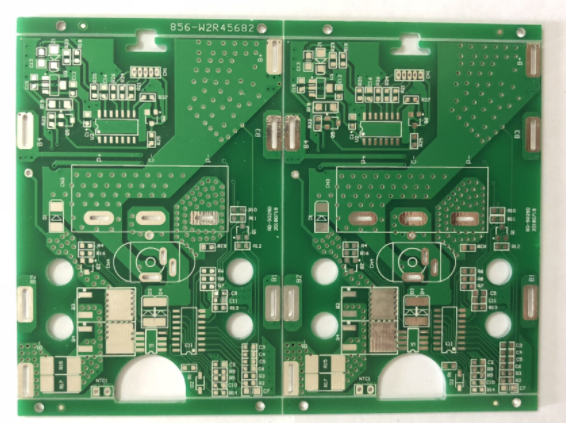PCB layout rules for RF boards
1. the PCB layout is sure: layout before dealing with veneer, main functions, working frequency, current voltage rf device type, EMC, rf associated indicators, such as a detailed understanding of, and clear laminated structure, the impedance control, contour structure size, size of shielding cavity and cover, special device processing instructions (such as hollow out, direct casing heat dissipation device size position), etc.
In addition, the power, heat dissipation, gain, isolation, sensitivity and other indicators of the main RF devices should be clarified, as well as the connection of filtering, bias and matching circuits. The power amplifier circuit should also be guided by matching wiring requirements recommended by the device manual or impedance matching circuits simulated by rf field analysis software.

2. Physical partition: The key is to arrange the main components according to the main signal flow pattern of the board. Firstly, fix the components on the RF path according to the RF port position, and adjust their orientation to reduce the length of the RF path to.
In addition to the general layout rules, it is also necessary to consider how to reduce the mutual interference and anti-interference ability between e
ach part, to ensure that multiple circuits have enough isolation, for the isolation degree is not enough or sensitive, with strong radiation source circuit module to consider the use of metal shielding cover to shield radio frequency energy in the RF region.
3. electrical partition: the layout is generally divided into power supply, digital and analog three parts, to be separated in space, layout wiring can not cross the region. And as far as possible to separate strong and weak electric signals, digital and analog, complete the same function of the circuit should be arranged as far as possible within a certain range, so as to reduce the signal loop area.
PCB wiring principles for RF boards
1) as far as possible, the digital circuit away from the analog circuit, to ensure that rf wiring reference large area of ground plane, and as far as possible rf wiring on the surface.
2) Digital and analog signal cables should not be routed across regions. If rf cables must pass through signal cables, it is preferred to lay a layer of ground connected to the main ground along rf cables between them; Second option, ensure that the rf line and the signal line cross, can reduce the capacitive coupling to, at the same time, as far as possible in each RF line around some more ground, and connected to the main ground.
Generally, rf printed lines should not be parallel wiring and should not be too long. If parallel wiring is really needed, a ground wire should be added between the two lines (ground wire holes, to ensure good grounding). Rf differential line, parallel line, two parallel lines with ground wire outside (ground wire hole, to ensure good grounding), printed line characteristic impedance according to the requirements of the device design.
3) the basic order of rf printed circuit board wiring: RF line - baseband RF interface line (IQ line) - clock line - power supply part - digital baseband part - ground.
4) Considering that green oil will affect the performance and signal of the microstrip line, it is recommended that the microstrip line of the veneer with higher frequency should not be coated with green oil, and the microstrip line of the veneer with low and medium frequency should be coated with green oil.
5) RF wiring usually does not drill holes. If RF wiring is required for layering, the hole size should be reduced to so as to not only reduce path inductance, but also reduce the chance of RF energy leakage to other areas in the lamination plate.
6) diplexer, IF amplifier, mixer there are always multiple RF/IF signals interfere with each other, RF and IF line should go as far as possible cross, and separate a piece of ground between them.
7) except for special purposes, it is forbidden to stretch out the excess wire of RF signal on the line.
8) baseband RF interface line (IQ line) wiring should be wider, above 10mil, in order to avoid phase error, line length as far as possible, and as far as possible spacing equal.
9) RF control line requirements as short as possible, according to the transmission control signal device input and output impedance to adjust the wiring length, reduce the introduction of noise. Route away from rf signals, nonmetallic holes and "ground" edges. Do not drill ground holes around cables to prevent signals from coupling to rf ground through holes.
10) Keep digital wiring and power wiring away from rf circuit as far as possible; Clock circuits and high frequency circuits are the main sources of interference and radiation. Be sure to arrange them separately and away from sensitive circuits.
11) The wiring of the main clock shall be as short as possible, and the line width is recommended to be above 10mil. The ground is covered on both sides of the line to prevent interference from other signal lines. It is recommended to use a ribbon line.
12) voltage controlled oscillator (VCO) control line must be far away from RF signal, if necessary, VCO control line can be implemented ground processing.